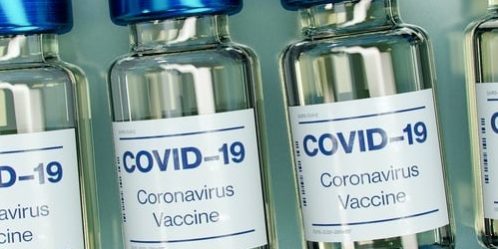How many vaccines will be available?
There are currently four COVID vaccines coming to market – Pfizer, Moderna, AstraZeneca and Johnson & Johnson.
What are the differences between the vaccines?
Both the Moderna and Pfizer vaccines work via messenger RNA technology (mRNA), which is new technology. Previously, to trigger an immune response many vaccines put a weakened or inactivated germ into our bodies. Not mRNA vaccines. Instead, they teach our cells how to make a protein – or even just a piece of a protein – that triggers an immune response inside our bodies. That immune response, which produces antibodies, is what protects us from getting infected if the real virus enters our bodies.
Once injected in the muscle it causes our body to assemble a piece of protein called a spike protein that will trigger our immune system to create antibodies as would happen in natural infection. You cannot get the disease from the vaccination and it in no way alters an individual’s genetics or DNA.
Both vaccines must be kept in cold storage (-80 degrees Celsius for Pfizer and -4 degrees for Moderna).
Side effects include transient sore arm, fatigue, muscle pain and low-grade fever for one to three days. Both vaccines require two shots. For the Pfizer vaccine you will need to have your second shot 21 days after your first. For Moderna, it’s 28 days. You must have your second immunization from the same manufacturer as your first.
The other route being explored by Johnson & Johnson and AstraZeneca is using a modified adenovirus (virus that causes the common cold in many species) to present the immune system viral proteins to develop immunity. The JJ version currently is a one-shot regimen (though there is research being done for a two-shot series). The Astra Zeneca vaccine is a two-shot series.
When will the vaccines be available, and who will get them first?
Possibly the first doses of vaccine may be available by the end of the month, with priority to be given to frontline healthcare workers and those in long-term care facilities. The second and third rounds would include teachers and school staff and adults with one comorbidity. This may also expand to college students, prisoners, and essential infrastructure workers.
Vaccines for later phase candidates may not be available until spring of next year. Where the vaccines will be administered is being worked out.
Will we need to be vaccinated yearly as we do with the flu?
This is not currently known. However, there is hope that the new mRNA technology may provide more lasting immunity. Since the virus has shown it can be harbored in animals, it’s unclear if this will lead to mutations that will require development of new vaccines.
What percentage of the population needs to be vaccinated before we can get the pandemic under control?
Many experts believe at least 70 percent of the population (200 million people) need antibodies to attain herd immunity to end the pandemic. If that was achieved through infection rather than vaccination, it would likely overwhelm our healthcare system.
Philip Nizza, DO, is an infectious disease specialist at Mather Hospital.

